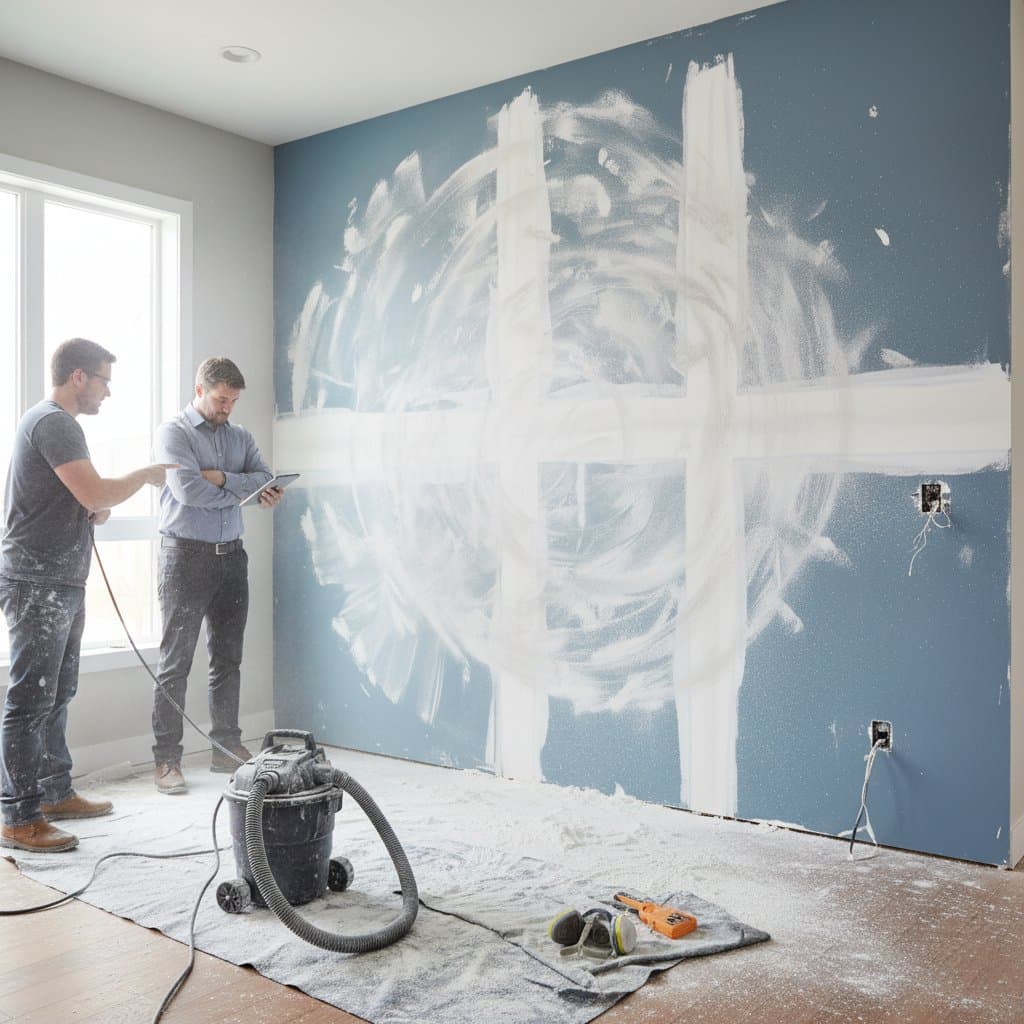Avoid Sanding Pitfalls to Save $800 on Your Paint Job
Painting refreshes walls, trim, or furniture with striking results, yet homeowners frequently overlook the critical role of surface preparation. Sanding errors rank among the top issues that trigger expensive corrections. A subpar surface invites paint to peel, bubble, or apply unevenly, often necessitating professional intervention to redo sections and inflate costs by $500 to $800. Grasping how to sidestep these pitfalls safeguards your funds and yields a seamless, enduring finish.
Why Sanding Matters in Paint Preparation
Sanding establishes a smooth base for optimal paint adhesion. This process eliminates flaws, rough patches, and prior coatings that hinder bonding. Neglecting or botching sanding undermines paint longevity and invites early failure. Beyond durability, effective sanding enhances the aesthetic quality, rendering walls and woodwork uniformly polished and professional.
Common Sanding Mistakes That Raise Costs
Homeowners encounter several recurring errors that escalate expenses. These issues extend labor and material demands significantly.
- Over-sanding: Excessive material removal compromises structural integrity, particularly on wood trim or furniture. Repairs or replacements become necessary before proceeding to paint.
- Uneven sanding: Variable pressure creates noticeable inconsistencies that bleed through fresh coats. Remedying these requires further sanding, priming, and repainting.
- Skipping grit progression: Transitioning directly from coarse to fine grits without intermediates leaves deep scratches invisible under paint. Such lapses typically force complete rework.
- Neglecting dust removal: Residual particles block even paint application. Addressing contaminated areas involves stripping and reapplying layers, adding substantial charges.
These missteps compound quickly, transforming a straightforward project into a financial burden.
Cost Breakdown of Sanding-Related Issues
Rectifying sanding errors typically incurs the following expenses:
- Surface repair: $150 to $300 for filling gouges or sourcing substitute materials.
- Extra labor: $200 to $400 when experts revisit preparation stages.
- Additional materials: $50 to $100 covering extra primer, abrasives, or paint supplies.
- Project delays: Hidden fees from prolonged timelines or rescheduling, often exceeding $100.
In extensive undertakings, these elements accumulate to $800 or beyond, underscoring the value of precision from the outset.
Professional vs DIY Sanding
DIY sanding suits small-scale tasks where basic tools suffice, such as refreshing a single room's trim. Enthusiasts with practice can achieve satisfactory results by adhering to grit sequences and maintaining steady motion. However, professionals excel in demanding scenarios like textured walls or antique wood restoration. Their specialized equipment and expertise minimize errors, preventing the costly callbacks that plague amateur efforts. Weigh your skill level and project scope to decide: self-handling saves upfront but risks premiums, while hiring ensures efficiency at a predictable rate.
Strategies to Avoid Sanding Pitfalls
Implement these targeted approaches to execute sanding effectively.
- Follow a grit sequence: Begin with 120-grit for initial leveling, progress to 220-grit for refinement, and finish with 320-grit for ultimate smoothness.
- Apply consistent pressure: Use light, uniform strokes in the direction of the grain to prevent dips or ridges.
- Clean surfaces meticulously: Employ a shop vacuum followed by a tack cloth to eradicate all dust particles.
- Examine under optimal lighting: Utilize bright, angled illumination to detect and correct flaws promptly.
- Assess project complexity: Delegate intricate or expansive areas to contractors equipped for precision work.
Adopting these methods reduces error likelihood and streamlines the painting phase.
Planning Your Budget for Smooth Results
Incorporate sanding wisely into your overall financial plan. Allocate 20 percent of the total budget to preparation materials and potential contingencies. Source quality sandpaper in bulk to cut per-use costs, and schedule work during milder seasons when labor rates dip. Track progress with a simple checklist to preempt overruns. This proactive stance not only curbs expenses but also elevates the final outcome to professional standards, extending the paint's lifespan and your satisfaction.
Frequently Asked Questions
What is the average cost of fixing sanding mistakes during painting projects?
Repairs generally span $500 to $800, influenced by damage scope, labor involvement, and supply needs.
What factors most influence sanding-related costs?
Area dimensions, error magnitude, surface material, and professional requirements all shape the final tally.
How can I save money while still preparing surfaces correctly?
Adhere to established grit progressions, ensure thorough cleaning, and tackle simple preparations personally while outsourcing challenges.
Should I sand myself or hire a professional?
DIY works for those with tools and familiarity, preserving funds on modest jobs. Professionals deliver superior outcomes for sizable or detailed endeavors, averting expensive mishaps.
How do I budget for unexpected sanding issues?
Reserve 10 to 15 percent of your painting allocation as a buffer for unforeseen labor or resources.
When is the best time to handle sanding and painting for lower costs?
Off-season periods yield reduced rates and greater contractor flexibility, trimming both preparation and application expenditures.



